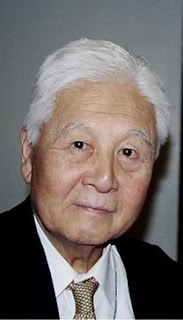Montana's senior U.S. Senator Max Baucus today announced additional asbestos-related health services to be included under the health care coverage he secured for Lincoln County asbestos victims in the Affordable Care Act.
"The people of Libby and Lincoln County suffered a horrendous injustice in the name of greed, and we have a responsibility to help them heal however we can. We secured a Public Health Emergency Declaration in Libby to make sure these folks had access to all the tools they needed. Providing Libby victims with the consistent, reliable, health care they are entitled to under the law is the least we can do to help right this outrageous wrong," Baucus said.
Dr. Brad Black, Medical Director of the Center for Asbestos Related Disease in Libby said, "CARD, our patients, and the Libby community greatly appreciates Senator Baucus' work to secure legislation to provide long-term asbestos health benefits and screening. Medicare benefits, the Medicare Pilot Program for Asbestos Related Disease and ongoing asbestos screening are critical services for the affected population of today and tomorrow."
CARD is a community based non-profit organization established in 2000 that is committed to providing asbestos screening and healthcare related to the Libby asbestos exposure.
"While some in Congress are trying to end Medicare as we know it for Montanans, we strengthened it and improved access to better health care for folks in places like Libby," said U.S. Senator Jon Tester. "Today the people of Libby have better access to the health care services they need and deserve. It's a powerful investment in Montana's people."
The Centers for Medicare and Medicaid Services (CMS) said today the agency would begin covering the additional benefits July 1, 2011 under a permanent pilot program Baucus included in the Affordable Care Act to ensure Libby victims received the full range of services needed to treat asbestos diseases. Benefits cover services not already included under Medicare coverage Libby asbestos victims now receive under the law, including:
- Special home care services;
- Special medical equipment;
- Help with travel to get care;
- Special counseling, for example, help quitting smoking;
- Nutritional supplements; and
- Prescription drugs not covered by Medicare drug plans (Participants in the Pilot Program must be in a Medicare drug plan to receive this benefit.)
Today's news is the third step in Baucus' provisions to secure health care coverage for Libby under the Affordable care Act. In Spring 2010, as part of Baucus' provisions, victims of asbestos exposure in Lincoln County began getting care under Medicare. In March of 2011, Baucus announced a grant program to help Lincoln County health care providers screen for asbestos-related diseases. Before the new program announced today, Libby asbestos victims relied on temporary and uncertain grants programs to receive the additional care they needed.
Individuals can call 1-888-469-9464 to enroll in the pilot by phone or visit the websitewww.noridianmedicare.com/ard beginning June 14.
Earlier this year Baucus was announced as the 2011 Tribute of Hope Award recipient by the Asbestos Disease Awareness Organization (ADAO) for his tireless efforts fighting on behalf of residents of Libby, Lincoln County and Asbestos victims everywhere. In March, the Senate unanimously passed Baucus' resolution to designate the first week of April 2011 as "Asbestos Awareness Week," and call attention to Libby and other victims of asbestos-related disease.
Additional background on Baucus' longstanding efforts to secure declaration of a Public Health Emergency in Libby:
Baucus has been a long-time champion of asbestos awareness in his efforts to declare the mining tragedy in Lincoln County a public health emergency and make sure folks there have access to the clean-up tools and health care they need.
Since news reports first linked widespread deaths and illness to exposure to deadly asbestos fibers at the defunct W.R Grace and Co. mine, Baucus has visited Libby more than 20 times, secured millions for healthcare and cleanup, brought numerous White House cabinet secretaries to the town, helped save the CARD clinic, and has dogged the EPA to keep cleanup efforts moving forward.
The mine near Libby, Montana, was the source of over 70 percent of all vermiculite sold in the U.S. from 1919 to 1990. There was also a deposit of asbestos at that mine, so the vermiculite from Libby was contaminated with asbestos. Vermiculite from Libby was used in the majority of vermiculite insulation in the U.S. and was often sold under the brand name Zonolite.
As far back as 1999, Baucus wrote a letter to then Secretary of Health and Human Services Donna Shalala requesting immediate medical help and assistance to the area. He further lambasted the EPA's decision to not declare a Public Health Emergency, calling it an "outrage."
In 2008, Baucus released a report detailing a 2002 attempt by the EPA to declare a Public Health Emergency in Libby that was thwarted by the previous Administration's Office of Management and Budget. And on June 17, 2009, due in large part to Baucus' efforts, the EPA declared its first ever public health emergency in Libby, Montana.
After securing the declaration, Baucus fought hard, as a key author of the Affordable Care Act, to make sure the law included a mechanism for residents of Libby and Lincoln County to access the health care they were entitled to as victims of a public health emergency. As a result, Libby residents began receiving coverage under Medicare in Spring 2010.






